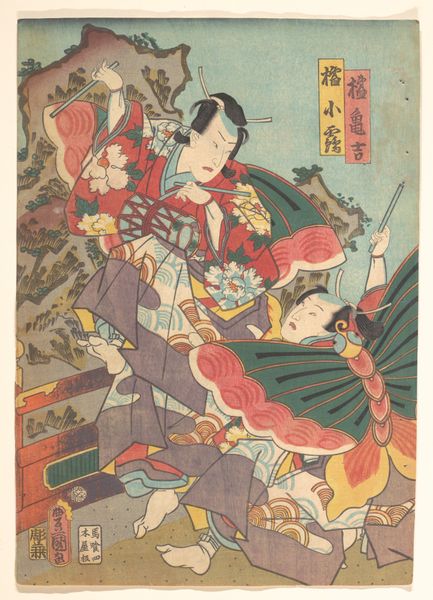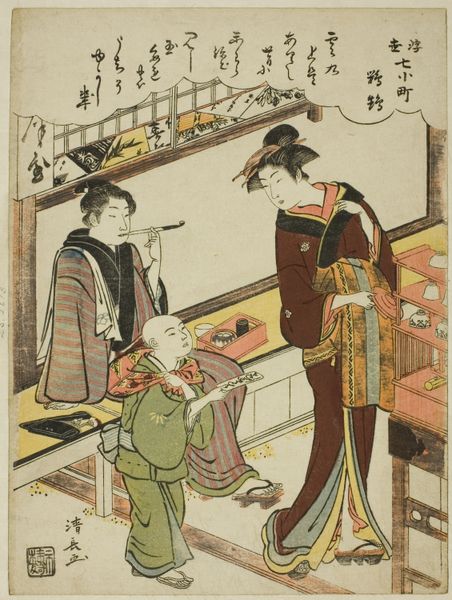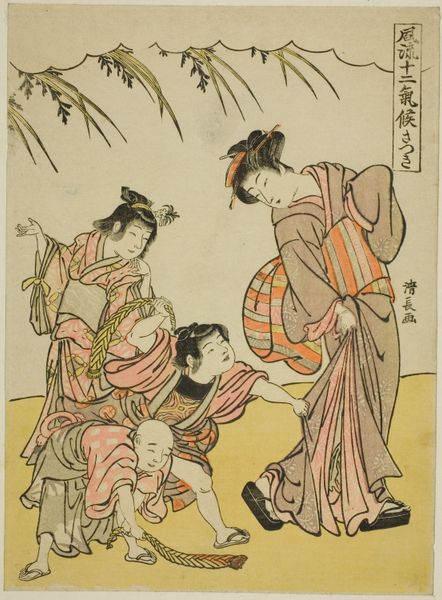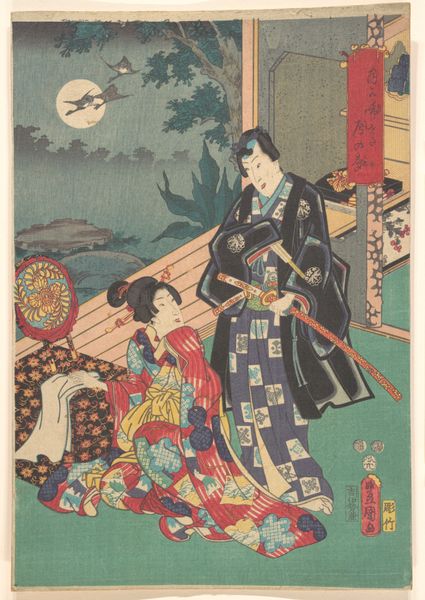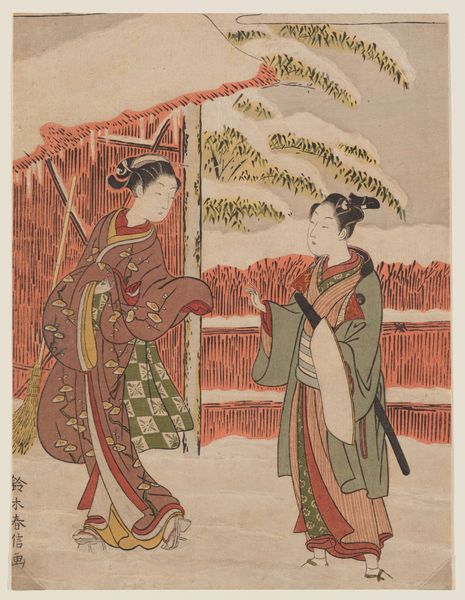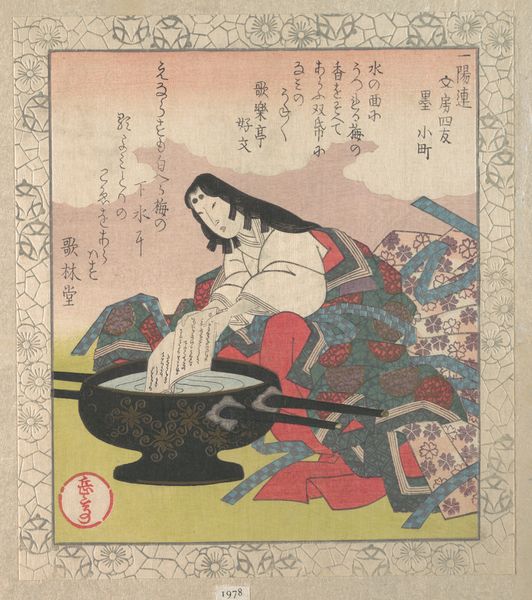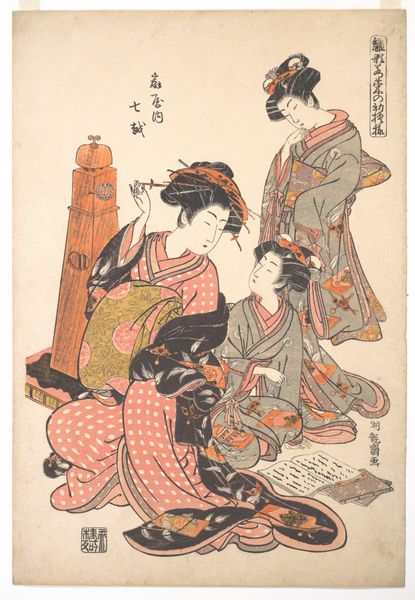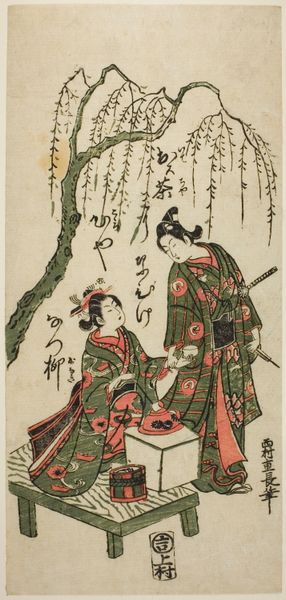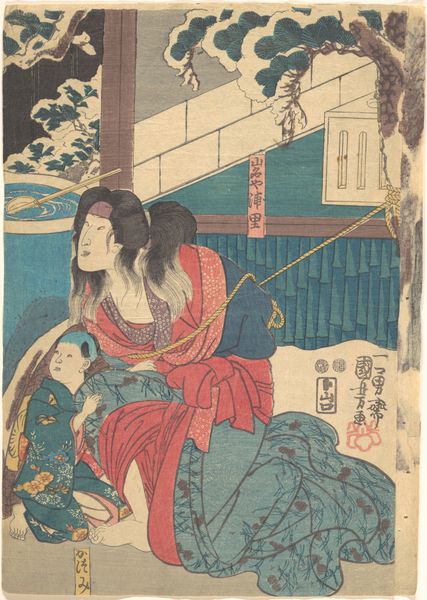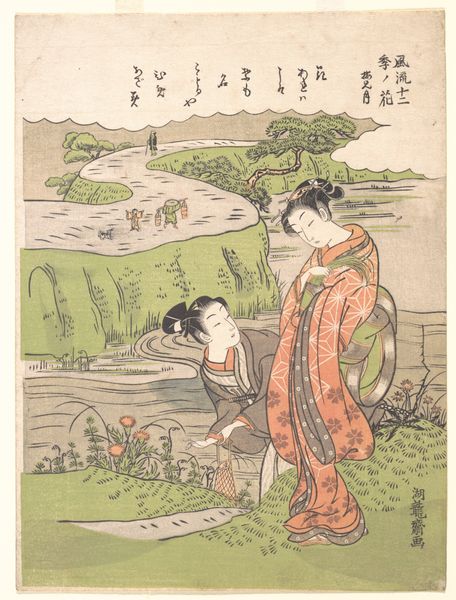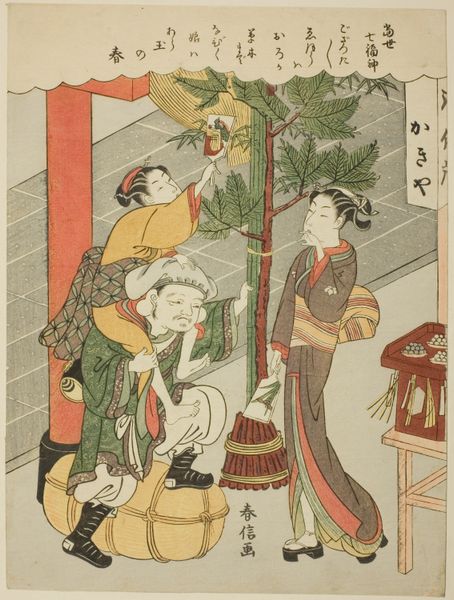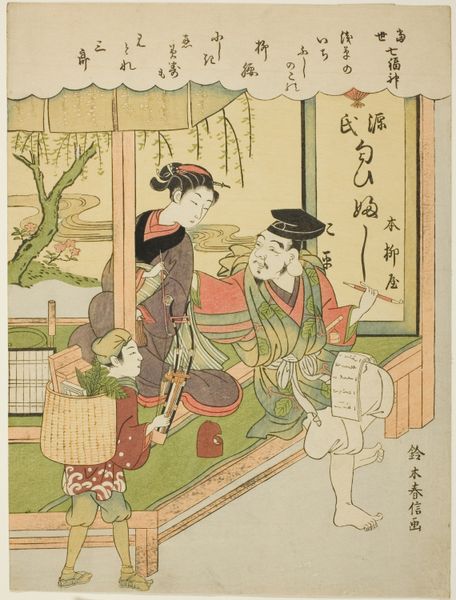
Man and Woman in Ceremonial Dress Arranging the New Year Decoration of a Pine Tree 19th century
0:00
0:00
painting, print, watercolor
#
portrait
#
aged paper
#
toned paper
#
narrative-art
#
painting
# print
#
asian-art
#
landscape
#
ukiyo-e
#
japan
#
personal sketchbook
#
watercolor
#
genre-painting
Dimensions: 8 1/8 x 5 5/16 in. (20.6 x 13.5 cm)
Copyright: Public Domain
Curator: Let’s consider this 19th-century Japanese woodblock print attributed to Kubo Shunman, titled "Man and Woman in Ceremonial Dress Arranging the New Year Decoration of a Pine Tree," currently residing in the Metropolitan Museum of Art. Editor: My first thought is how delicate the paper looks, almost fragile. I’m drawn to the subdued color palette and the visible wood grain adding to its tangible appeal. Curator: Ukiyo-e prints like this were a product of highly specialized labor. Consider the process: the artist's design, the block carver meticulously translating that design into woodblocks, and the printer applying ink and pressure to create the final image. Each step demanded specific skills honed over years. Editor: The image tells us a story, a genre painting revealing cultural practices around New Year's celebrations. How do we know how to 'read' it? The act of decorating a pine tree, especially in ceremonial dress, signifies tradition, a visual representation of New Year customs embedded in Japanese society at that time. Also, what of this vignette in the top-right showing someone constructing something? Is that the literal labour behind New Year decorations? Curator: Exactly! And it probably does signal toward labour and production. Consider, too, the intended audience and how the image functioned within that context. Was it mass-produced for wide distribution, a souvenir for pilgrims, or something else entirely? The paper quality, the pigments used – these factors can reveal insights into the print’s intended market and its perceived value. We also need to remember that Japanese art was entering the West in force from the mid-19th century and influencing the techniques used in western printmaking. Editor: So the print exists as both an artistic object and a social artifact. Viewing it helps us understand social activities around this moment. Did similar prints contribute to defining New Year traditions and customs? Did museums display them in any order, if so what traditions would they preserve through curatorial choices? Curator: Precisely. Examining the materials and labor involved, alongside the socio-cultural context, really underscores how much meaning can be gleaned from a seemingly simple print. Editor: Yes, shifting our perspective, appreciating how each impression carries the weight of labor and historical circumstances transforms how we understand and, most crucially, value the artwork.
Comments
No comments
Be the first to comment and join the conversation on the ultimate creative platform.
